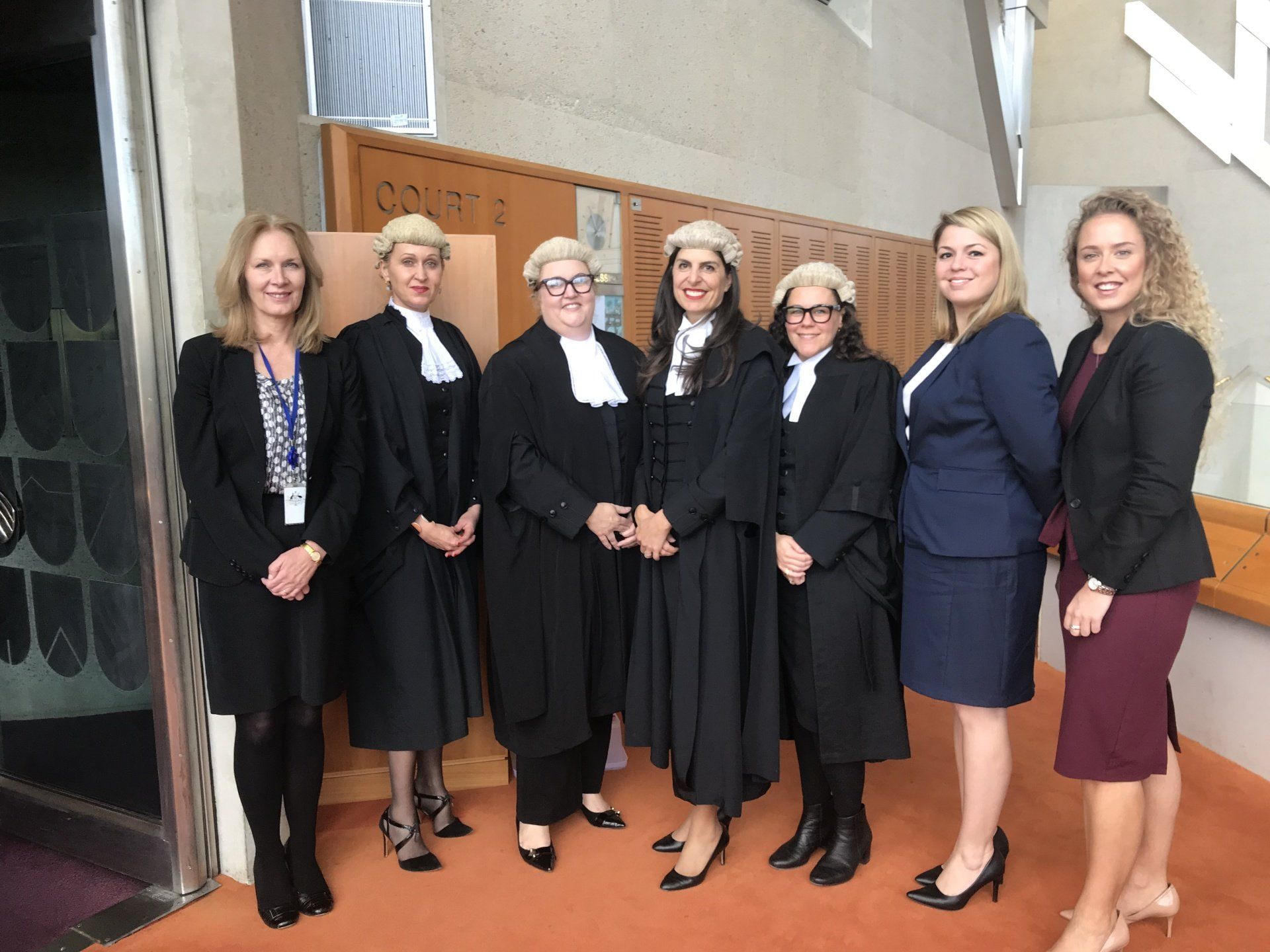High Court Matter of DL v The Queen
Canberra, ACT - All Female Bar Table
Ms Velasquez along with Matouk Joyner Lawyers instructed Ms Georgia Huxley and Ms Gabrielle Bashir SC in the matter of DL v The Queen on 11 May 2018 in the High Court at Canberra ACT
. What also made this date special is that this may be the first time that there has been an all female bar table on both the Defence and Crown sides. The photo above is of the practitioners post-hearing. The transcript is available at this website: http://www.austlii.edu.au/cgi-bin/viewdoc/au/cases/cth/HCATrans//2018/83.html
Brief overview of the matter
The matter appealed the decision of the New South Wales Court of Criminal Appeal
[2017] NSWCCA 58. In March 2008 the Appellant was found guilty of the murder of a 15 year old girl
in July 2005. At the time that he committed the offence, the Appellant was just
16 years old. The then maximum penalty for murder was life imprisonment,
with a standard non-parole period (which also applied to juvenile offenders) of
25 years if the victim was a child.
In November 2008 Justice RS Hulme sentenced the Appellant to 22 years
imprisonment, with a non-parole period of 17 years. In doing so, his Honour
concluded that that the offence fell a little below the mid-range of objective
seriousness, being a conclusion relevant to the applicability of the then standard
non-parole period. For various reasons, the Appellant did not appeal either his
sentence or his conviction until 2016.
Upon appeal the Crown conceded that Justice Hulme had committed a
“Muldrock error”. Justice Hulme did this by assessing the sentence in
accordance with the principles of R v Way [2004] NSWCCA 131 and then giving
considerable importance to the standard non-parole period of 25 years.
Although correct at the time, this approach was subsequently overturned by
Muldrock v The Queen [2011] HCA 39.
On 13 April 2017 the Court of Criminal Appeal (Leeming JA, Rothman &
Wilson JJ) nonetheless dismissed the Appellant’s appeal against conviction,
with Justices Leeming and Wilson also dismissing the appeal against sentence.
Justice Rothman however would have allowed the appeal against sentence.
When it came to resentencing the Appellant, almost a decade after he had
initially been sentenced, Justices Leeming and Wilson came to a very different
conclusion concerning the objective seriousness of the Appellant’s crime as did
Justice Hulme. Unlike Justice Hulme, who partly relied upon the assumption
that the Appellant had been suffering from a temporary psychosis as a
mitigating factor, the majority noted that no diagnosis of serious mental illness
had ever been made in the decade that the Appellant had been in custody.
Justices Leeming and Wilson therefore found the level of the Appellant’s
offending as being objectively very serious and not one warranting the
imposition of a lesser sentence.
Justice Rothman however noted that the offence was a violent one, seemingly
without motive and wholly irrational. The attack was frenzied and the mental
condition of the Appellant was, at least in part, causative of the offending. He
further noted that the Appellant was then an extremely immature 16 year old.
His Honour concluded that the Appellant’s mental health contributed to the
commission of the offence in a material way and, as a consequence, his moral
culpability was reduced. In those circumstances, the necessity for denunciation
as an element of the sentence was reduced. Justice Rothman would have
therefore imposed a head sentence of 18 years imprisonment, with a nonparole
period of 12 years.
The grounds of appeal are:
- The Court erred in dismissing the appeal in circumstances where the
Appellant was denied procedural fairness.
- The Court erred in substituting aggravated factual findings, on an
Appellant’s appeal, in the absence of any challenge to the factual
findings of the primary judge by the Crown, and in circumstances where
the majority held that the primary findings of the sentencing judge were
“open”, when determining whether a lesser sentence was warranted in
law.



